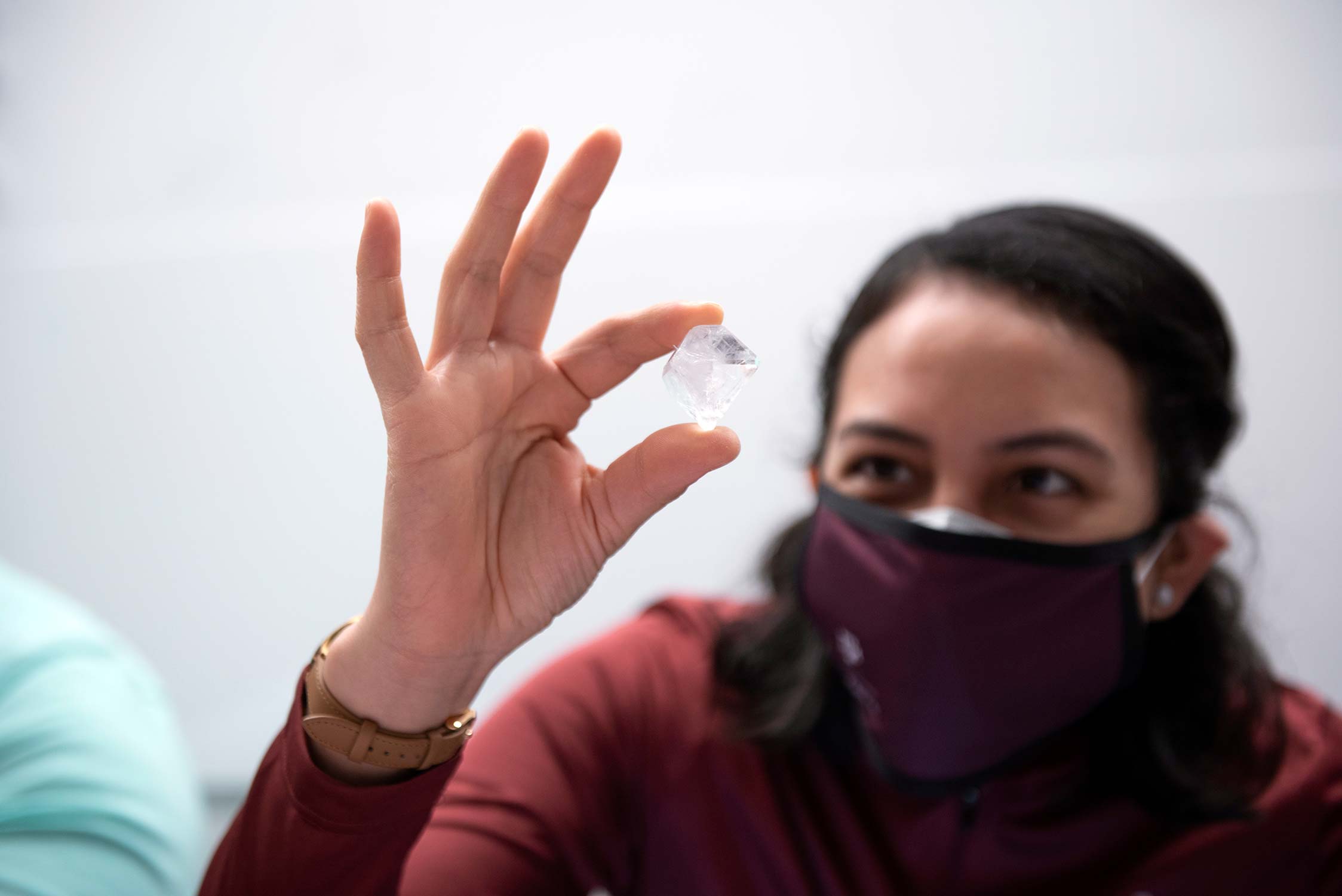What better way to get a New Year in Aggieland off to a bright, shining start than with crystals — and, of course, science — on a Saturday?
On Jan. 8, Texas A&M University served as the host site for judging for the eighth annual U.S. Crystal Growing Competition (USCGC), a national contest that challenges teams of K-12 students and educators to test their scientific abilities in determining who can grow the biggest, most beautiful crystals. A panel of graduate student, staff and faculty volunteers from the university’s Department of Chemistry dedicated part of their weekend to critiquing and scoring nearly 170 entries mailed in by teams representing more than 40 states on the basis of their final shape, size and clarity.
“It was fantastic to have been able to host and support this wonderful outreach activity which allows young people to experience some of the beauty and symmetry intrinsic to the field of chemistry,” said Dr. Simon W. North, professor and head of Texas A&M Chemistry. “I am impressed by the efforts of the organizers and volunteers to make these inspirational programs happen, despite the challenges of the pandemic.”
During the course of five weeks beginning in mid-October and coinciding with National Chemistry Week, participants cultivate their crystals in beakers filled with a solution of aluminum potassium sulfate (alum), a nontoxic chemical used in water purification. Winners in the various categories will receive cash prizes of up to $200.
Present to oversee the judging that day was Dr. Jason Benedict, an associate professor of chemistry and crystallographer at the University at Buffalo, who founded the contest in 2014 as a way to introduce children to the importance of crystal-based research. Crystals, which occur in nature when molecules stabilize as liquid cools and hardens, are found throughout nature from geodes to snowflakes. In scientific realms, their growth mechanism is studied for applications in electronics and optics.
“The kids love making crystals, and every time I pick one of theirs up to look at it, I’m just awestruck,” Benedict said. “Crystal growth is hard, and it’s a challenge if you’ve never done it before, but there are just so many cool learning opportunities for kids to experience as they go down this road.”
Growing a pristine alum crystal requires patience and skill. Benedict notes that if the water evaporates too fast, too much alum will crystalize, resulting in jagged edges and an opaque appearance. Too slow, on the other hand, and the crystal will be stunted. But if everything goes just right, the crystal will be big, transparent and octahedral with a discernable sparkle when the light hits it.
Growth was top of mind for Benedict several years back when he began enlisting regional coordinators from other universities — including Georgetown University, the University of Central Florida and the University of New Mexico — in an effort to broaden the event’s national reach. Texas A&M chemist Dr. Michael Nippe, who serves as a regional coordinator on behalf of Texas A&M, says he first learned of the USCGC soon after its inception while searching for large-scale STEM outreach opportunities for the department. Last spring, he helped initiate efforts to bring the judging to campus this year, recruiting members of his research group and that of fellow Texas A&M chemist Dr. Andy Thomas along with the X-Ray Diffraction Laboratory’s Dr. Joseph Reibenspies to assist in the official 2021 deliberations.
“There are few experimental results that can compete with the satisfaction of obtaining beautiful, perfect crystals when everything goes well,” Nippe said. “We were excited to host the USCGC this year in the Department of Chemistry at Texas A&M, and I’m grateful to everyone who helped with the judging.”
Annual sponsors of the USCGC in addition to Texas A&M Chemistry include the American Crystallographic Association, the UB Department of Chemistry in the College of Arts and Sciences, the Western New York section of the American Chemical Society, Bruker, The Cambridge Crystallographic Data Centre, Krackeler Scientific, the National Science Foundation, VWR and Ward’s Science and numerous individual donors.
For more information on the U.S. Crystal Growing Competition and to view a complete list of 2021 winners, visit https://www.uscrystalgrowingcompetition.org/.
See additional photographs from the day’s judging via the Texas A&M Science Flickr archive.


